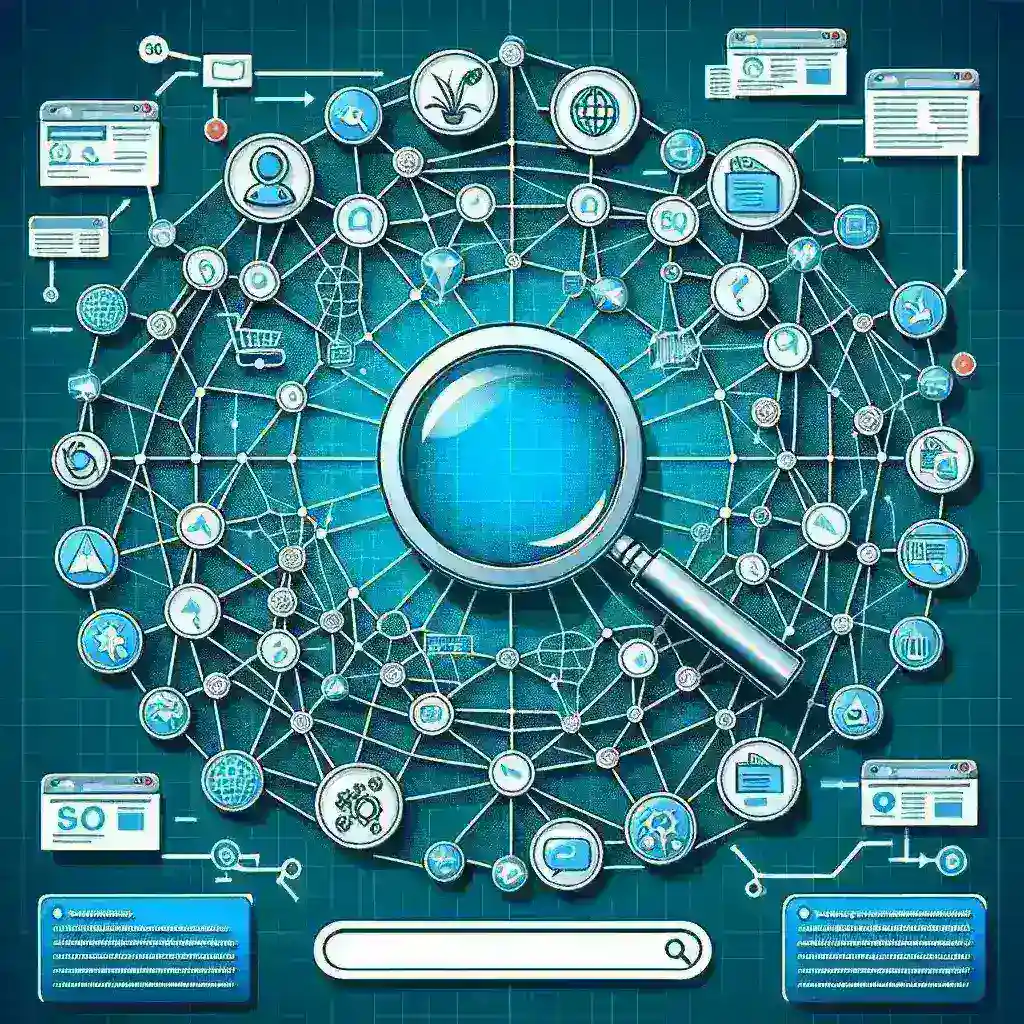The rapid advancement of technology has been a driving force behind significant changes in the global economy, reshaping industries and altering the landscape of employment. Emerging technologies, such as artificial intelligence (AI), automation, and blockchain, have become central to discussions about the future of work. While these innovations promise efficiency, cost savings, and new business opportunities, they also raise concerns about job displacement, skill gaps, and economic inequality.
Understanding Emerging Technologies
Emerging technologies are innovative advancements that are either in development or just beginning to be adopted on a large scale. These technologies have the potential to disrupt existing markets, create new industries, and transform business operations. Notable examples include AI, machine learning, blockchain, IoT, and robotics.
| Technology | Description | Applications | Impact |
| Artificial Intelligence (AI) and Machine Learning | Systems that perform tasks requiring human-like intelligence, including problem-solving, decision-making, and pattern recognition. | Healthcare, finance, customer service, and more. | Automates complex tasks, improves decision-making, and increases efficiency across sectors. |
| Blockchain Technology | A decentralized digital ledger that ensures transparency, security, and immutability of transactions. | Cryptocurrencies, supply chain management, voting systems. | Streamlines processes, eliminates intermediaries, and enhances data integrity. |
| The Internet of Things (IoT) | A network of interconnected devices that communicate and exchange data to optimize processes and decision-making. | Smart home appliances, industrial machinery, logistics. | Enables real-time monitoring, automation, and improved operational efficiency. |
| Robotics and Automation | Use of machines and software systems to perform tasks without human intervention. | Manufacturing, logistics, data management, customer service. | Increases precision, efficiency, and reduces the need for manual labor. |
Positive Impacts of Emerging Technologies on Employment
While there are concerns about job displacement, emerging technologies also present significant opportunities for job creation, efficiency improvements, and the development of new industries.
Job Creation in New Industries
The rise of emerging technologies has led to the creation of entirely new industries, such as the tech sector, which has generated millions of jobs worldwide. For example, the development of AI has spurred demand for data scientists, machine learning engineers, and AI specialists. Similarly, the growth of the blockchain industry has created opportunities for blockchain developers, cryptographers, and compliance officers.
Increased Efficiency and Productivity
Automation and AI have the potential to significantly increase productivity across various sectors. By automating routine tasks, businesses can reallocate human resources to more complex, value-added activities. For instance, in manufacturing, robots can handle repetitive tasks like assembly, while humans focus on quality control and innovation. This shift can lead to higher overall productivity and the creation of new roles centered around technology management and innovation.
Enhanced Skill Development
As technology advances, there is a growing need for workers to develop new skills. This demand for upskilling and reskilling provides opportunities for lifelong learning and career advancement. Educational institutions and online platforms are increasingly offering courses and certifications in emerging technologies, enabling workers to stay competitive in the job market. This emphasis on continuous learning helps bridge the skills gap and empowers individuals to adapt to changing job requirements.
Remote Work and Gig Economy Opportunities
The advent of digital technologies has facilitated the rise of remote work and the gig economy, providing flexible employment opportunities. Freelancers, remote workers, and independent contractors can leverage platforms like Upwork, Fiverr, and Amazon Mechanical Turk to find work across various industries. This trend has expanded job opportunities beyond geographical boundaries, allowing individuals to access global job markets and offering companies access to a wider talent pool.
Case Studies: Impact of Emerging Technologies on Specific Industries
Manufacturing: The Rise of Automation and Robotics
In the manufacturing sector, automation and robotics have dramatically transformed production processes. Key changes include:
- Increased Automation: Robots now handle repetitive tasks such as assembly, welding, and painting, boosting productivity and efficiency.
- Job Displacement: The shift to automation has led to fewer low-skilled labor roles but has increased demand for skilled technicians.
- New Opportunities: The industry now requires more technicians to program, maintain, and repair robots, creating new job roles.
Healthcare: AI and Machine Learning in Diagnosis and Treatment
AI and machine learning are reshaping the healthcare industry by improving diagnostics and personalizing treatments. Significant impacts include:
- Enhanced Diagnostics: AI algorithms analyze medical images like X-rays and MRIs with high precision, aiding early disease detection.
- Personalized Treatment: Machine learning models predict patient outcomes and suggest treatment plans based on extensive datasets.
- Emerging Careers: Although job displacement in diagnostic roles is a concern, new opportunities in data analysis, machine learning, and healthcare IT are emerging.
Finance: Blockchain and Automation in Banking
The finance sector is experiencing major changes due to blockchain technology and automation. Key developments include:
- Blockchain Integration: Secure and transparent transactions without intermediaries reduce costs and improve efficiency.
- Automated Services: AI and machine learning automate tasks such as fraud detection, customer service, and risk assessment.
- Shifts in Employment: While automation may displace traditional roles like tellers and customer service representatives, there is growing demand for blockchain specialists and cybersecurity experts.
Agriculture: IoT and Automation in Farming
IoT and automation are revolutionizing the agriculture industry. Key advancements include:
- Real-Time Monitoring: IoT devices such as sensors and drones provide real-time data on soil conditions, crop health, and weather patterns.
- Automated Farming: Automation in planting, harvesting, and irrigation reduces manual labor requirements.
- New Skill Demands: While automation may displace some agricultural jobs, there is an increasing need for skilled workers in precision agriculture and agri-tech.
Negative Impacts of Emerging Technologies on Employment
Despite the benefits, the integration of emerging technologies into the workforce also poses significant challenges, particularly in terms of job displacement, skill mismatches, and economic inequality.
Job Displacement and Automation
One of the most significant concerns surrounding emerging technologies is the potential for job displacement due to automation. As machines become more capable of performing tasks previously done by humans, certain jobs may become obsolete. For example, self-checkout systems in retail stores and automated customer service chatbots have reduced the need for cashiers and call center agents. This trend is particularly concerning in sectors where tasks are repetitive and easily automated, such as manufacturing, retail, and transportation.
Widening Skill Gaps
The rapid pace of technological change can outstrip the ability of the workforce to adapt, leading to a mismatch between the skills required by employers and those possessed by workers. This skills gap can result in increased unemployment or underemployment for those who lack the necessary technical skills. For instance, while there is a growing demand for data scientists and AI specialists, workers with traditional skill sets may find it challenging to transition into these new roles without significant retraining.
Economic Inequality
Emerging technologies can exacerbate economic inequality by disproportionately benefiting those with access to education, resources, and opportunities. High-skilled workers who can leverage these technologies may see increased wages and job security, while low-skilled workers may face job displacement and wage stagnation. This disparity can lead to a widening income gap, particularly in economies that are slow to invest in education and training programs that address the needs of a changing job market.
Workplace Disruption
The integration of new technologies can disrupt traditional workplace structures and practices. For example, the rise of remote work and the gig economy has led to changes in how companies manage employees and contract workers. While this flexibility can be beneficial, it also presents challenges in terms of job security, worker benefits, and labor rights. Gig workers often lack the same protections and benefits as full-time employees, leading to concerns about precarious employment and reduced job stability.
Strategies for Mitigating Negative Impacts on Employment
To address the challenges posed by emerging technologies, it is crucial to implement strategies that mitigate negative impacts on employment while maximizing the benefits.
Investing in Education and Training
To prepare the workforce for future technological changes, focus on education and training programs that emphasize essential skills for emerging technologies. Key steps include:
- Collaborative Curriculum Development: Governments, educational institutions, and businesses should work together to create curricula that cover coding, data analysis, AI, and other relevant fields.
- Promotion of Lifelong Learning: Encourage continuous skill updates through lifelong learning initiatives, allowing workers to adapt to technological advancements.
Promoting Inclusive Economic Growth
Ensuring that the benefits of emerging technologies are widely shared requires a focus on inclusive economic growth. Important actions include:
- Infrastructure Investment: Invest in infrastructure to support technological access and development.
- Digital Technology Access: Provide widespread access to digital technologies to bridge gaps.
- Support for SMEs: Assist small and medium-sized enterprises (SMEs) that face challenges from automation.
- Encouraging Innovation and Entrepreneurship: Create an environment that fosters new job opportunities and reduces economic inequality.
Encouraging Public-Private Partnerships
Public-private partnerships are essential for addressing technological disruption challenges. Key strategies include:
- Creation of Reskilling Programs: Governments and businesses should develop reskilling and upskilling programs tailored to specific industry needs.
- Policy Development: Collaborate to create policies that balance innovation with worker protection, including social safety nets for those affected by job displacement.
Implementing Ethical AI and Automation Practices
As AI and automation become more common, adopting ethical practices is crucial. Key considerations include:
- Transparency in AI Decision-Making: Ensure that AI decision-making processes are transparent.
- Avoidance of Bias: Address and prevent bias in algorithmic systems.
- Human-Centric Automation: Prioritize human elements in automated processes, balancing economic and social implications.
Supporting Transition Programs for Displaced Workers
Transition programs are vital for assisting workers displaced by automation. Effective support includes:
- Job Placement Services: Offer services to help workers find new employment.
- Career Counseling: Provide guidance for career transitions.
- Financial Assistance for Retraining: Support workers with financial aid for retraining to reduce the impact of job loss and foster workforce resilience.
Future Trends: The Evolving Job Market
As emerging technologies continue to evolve, the job market will undergo further transformations. Understanding these trends can help individuals and organizations prepare for the future.
Rise of Hybrid Jobs
Hybrid jobs, which combine technical skills with traditional roles, are expected to become increasingly common. For example, marketing professionals may need to develop data analysis skills to interpret consumer behavior, while HR managers may require knowledge of AI tools for talent acquisition. The demand for workers who can bridge the gap between technology and traditional business functions will grow, leading to the creation of new roles and career paths.
Growth of the Green Economy
The transition to a green economy, driven by the need for sustainable practices, is expected to create millions of jobs in renewable energy, energy efficiency, and environmental management. Emerging technologies such as smart grids, electric vehicles, and sustainable agriculture will play a central role in this shift. As a result, there will be increased demand for workers with skills in green technologies, environmental science, and sustainable business practices.
Expansion of Remote Work and Digital Nomadism
The COVID-19 pandemic accelerated the adoption of remote work, a trend that is likely to continue as digital technologies evolve. Remote work offers flexibility and access to a global talent pool, making it an attractive option for both employers and employees. Additionally, the rise of digital nomadism, where individuals work remotely while traveling, is expected to grow as more people seek work-life balance and autonomy. This shift will require companies to adapt their management practices and invest in digital infrastructure to support a distributed workforce.
Increased Focus on Human-Centered Roles
As automation takes over routine tasks, there will be a growing emphasis on roles that require human creativity, emotional intelligence, and complex problem-solving. Jobs in areas such as design, healthcare, education, and customer service will likely see increased demand as these roles require skills that are difficult to automate. The future job market will place a premium on human-centered skills, leading to a renewed focus on the humanities and social sciences in education.
Adoption of Lifelong Learning as a Norm
The pace of technological change will make lifelong learning an essential part of career development. Workers will need to continuously update their skills to remain competitive in the job market. This shift will drive demand for flexible, accessible education options, such as online courses, micro-credentials, and industry certifications. Companies may also play a larger role in providing ongoing training and development opportunities for their employees.




